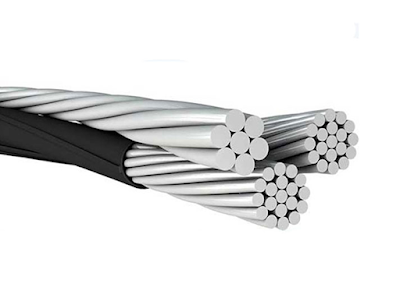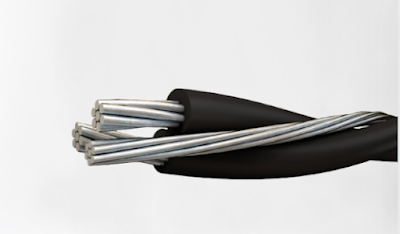Why is Triplex Cable Twisted?

Introduction:
Triplex cable have become indispensable components in various industries, from telecommunications to electrical engineering. Among their distinctive features, the twisted configuration stands out as a critical aspect of their design. In this comprehensive guide, we delve into the intricate science behind why triplex cable are twisted and explore the myriad benefits this technique offers.
Understanding Triplex Cables:
Triplex cable, also known as twisted pair cables, consist of three insulated conductors bound together in a helical arrangement. Each conductor carries electrical signals, and their twisting configuration plays a pivotal role in optimizing performance and mitigating interference.
The Science Behind Twisting:
The primary purpose of twisting conductors in a triplex cable is to reduce electromagnetic interference (EMI) and crosstalk. When electrical signals flow through conductors, they generate magnetic fields. Without twisting, these fields can interact with neighboring conductors, leading to signal degradation and noise interference.
By twisting the conductors, the magnetic fields generated by adjacent wires counteract each other, resulting in a phenomenon known as magnetic cancellation. This cancellation minimizes the extent of EMI and crosstalk, ensuring cleaner signal transmission and improved overall performance.
Moreover, the twisting configuration enhances the cable's resistance to external interference sources, such as electromagnetic radiation from nearby devices or power lines. This shielding effect helps maintain signal integrity, especially in environments prone to high levels of electromagnetic noise.
By twisting the conductors, the magnetic fields generated by adjacent wires counteract each other, resulting in a phenomenon known as magnetic cancellation. This cancellation minimizes the extent of EMI and crosstalk, ensuring cleaner signal transmission and improved overall performance.
Moreover, the twisting configuration enhances the cable's resistance to external interference sources, such as electromagnetic radiation from nearby devices or power lines. This shielding effect helps maintain signal integrity, especially in environments prone to high levels of electromagnetic noise.
Benefits of Triplex Cable Twisting:
The utilization of twisted conductors in triplex cable offers numerous benefits, making them the preferred choice for various applications:
- Crosstalk Mitigation: Twisting minimizes the likelihood of signal interference between adjacent conductors, ensuring reliable data transmission in multi-channel communication systems.
- EMI Reduction: The twisted configuration effectively reduces electromagnetic interference, enhancing signal quality and reducing the risk of data corruption.
- Noise Immunity: Triplex cables exhibit greater resilience to external noise sources, making them ideal for use in industrial environments, telecommunications networks, and high-traffic areas where interference is prevalent.
- Signal Integrity: By maintaining signal integrity and minimizing attenuation, twisted pair cables support long-distance communication without compromising performance.
- Cost-Effectiveness: Despite their advanced design and performance benefits, triplex cables remain cost-effective compared to alternative solutions, making them a practical choice for various projects and applications.
Applications of Triplex Cables:
Triplex cable find widespread use across diverse industries and applications, including:
- Telecommunications: Triplex cables serve as the backbone of telecommunications networks, facilitating voice, data, and video transmission with minimal signal degradation.
- Networking: Ethernet and LAN installations often rely on twisted pair cables for local area network connections, ensuring high-speed data transfer and reliable connectivity.
- Industrial Automation: In industrial settings, triplex cables provide robust communication links for control systems, sensors, and automation equipment, enabling seamless operation and monitoring.
- Power Distribution: Triplex cables play a vital role in electrical power distribution, delivering reliable power transmission and supporting various voltage levels in residential, commercial, and industrial installations.
Conclusion:
In conclusion, the twisting of conductors in triplex cable is not merely a design feature but a fundamental engineering solution aimed at optimizing performance and reliability. By mitigating electromagnetic interference, reducing crosstalk, and enhancing noise immunity, twisted pair cables have revolutionized communication and connectivity across numerous industries. Whether in telecommunications networks, industrial automation systems, or power distribution infrastructure, triplex cables continue to exemplify the synergy between scientific principles and practical applications, driving innovation and progress in the field of electrical engineering.



Comments
Post a Comment